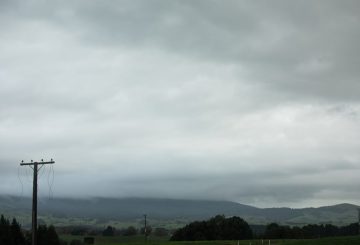오늘 밤, 타우랑가의 스카이 워치들은 오로라 오스트랄리스 (Aurora Australis) 라고도 불리는 남극광을 볼 수 있을지 애타게 기다리고 있습니다.남쪽 지평선을 가로지르는 이 아름다운 불빛은 이 지역에서는 보기 드문 광경입니다.이 현상은 최근에 지구를 향해 여러 차례 코로나 질량 방출 (CME) 을 방출한 대규모 태양 흑점 그룹에 의해 가능해졌습니다.
오로라 오스트랄리스 (Aurora Australis) 는 태양의 하전 입자가 지구의 자기장 및 대기와 상호 작용하여 연출되는 놀라운 빛의 향연입니다.이들 입자 (대부분 전자와 양성자) 는 대기 중의 가스와 충돌하여 밤하늘에 녹색, 분홍색, 자주색, 빨간색의 선명한 색상을 만들어냅니다.
타우랑가 천문학회 회장인 데이비드 그릭 (David Greig) 은 이들 CME가 주말에 도착할 것으로 예상되며, 아마도 남쪽 하늘에서 놀라운 오로라를 볼 수 있을 것이라고 말했습니다.그는 걱정할 필요가 없으며 지금이 오로라 오스트랄리스를 볼 수 있는 좋은 기회라고 안심시킵니다.
데이비드는 흑점과 태양 활동이 약 11년마다 최고조에 달하며, 현재는 정점에 가까워지고 있다고 설명합니다.이 흑점은 태양풍을 증가시켜 아름다운 오로라를 만들어냅니다.마지막 정점은 2013년이었고, 다음 절정은 2023-2025년 사이가 될 것으로 예상됩니다.
이 이벤트는 심각한 우주 폭풍으로 인해 Transpower가 발행한 “전력망 비상 사태” 알림과 동시에 발생합니다.뉴질랜드의 전력망을 운영하는 이 기관은 상당한 태양 활동으로 인해 이번 주말에 지자기 폭풍이 지구에 영향을 미칠 가능성이 있다고 경고합니다.
David는 CME는 예측할 수 없지만 흑점이 많거나 클 때 더 자주 발생한다고 말합니다.그는 3월과 9월 춘분 무렵에 오로라 활동이 일어날 가능성이 더 높다고 덧붙입니다.오로라를 보려면 밝은 빛이 없는 어두운 곳에서 남쪽을 바라봐야 합니다.오로라는 더 남쪽에서 보는 것이 가장 좋지만, 활동이 심할 때는 더 북쪽에서 보거나 사진을 찍을 수 있습니다.
현지 사진작가 John van der Broek은 2023년 11월에 마웅가타푸에 있는 자택에서 남극광을 촬영했으며, 다시 촬영할 계획입니다.
실시간 우주 기상 뉴스를 제공하는 사이트인 Solarham.com은 추적 중인 우주 폭풍에 대해 보도했습니다.이 사이트의 한 대변인은 “2003년 핼러윈 대폭풍 이후 처음으로 극한 (G5) 지자기 폭풍 임계값에 도달했다”고 밝혔다.
David는 현재 오로라 활동이 언제 발생할 것으로 예상되는지에 대한 예측을 모니터링하고 있습니다.그는 페이스북의 NZ Aurora Australis 페이지를 팔로우하여 최신 정보를 확인할 것을 권장합니다.
이상적인 관측 조건이 예상된다면 오늘 밤은 자연이 하늘을 선명한 색으로 물들이면서 숨막히는 장관을 연출할 수 있을 것입니다.




























































